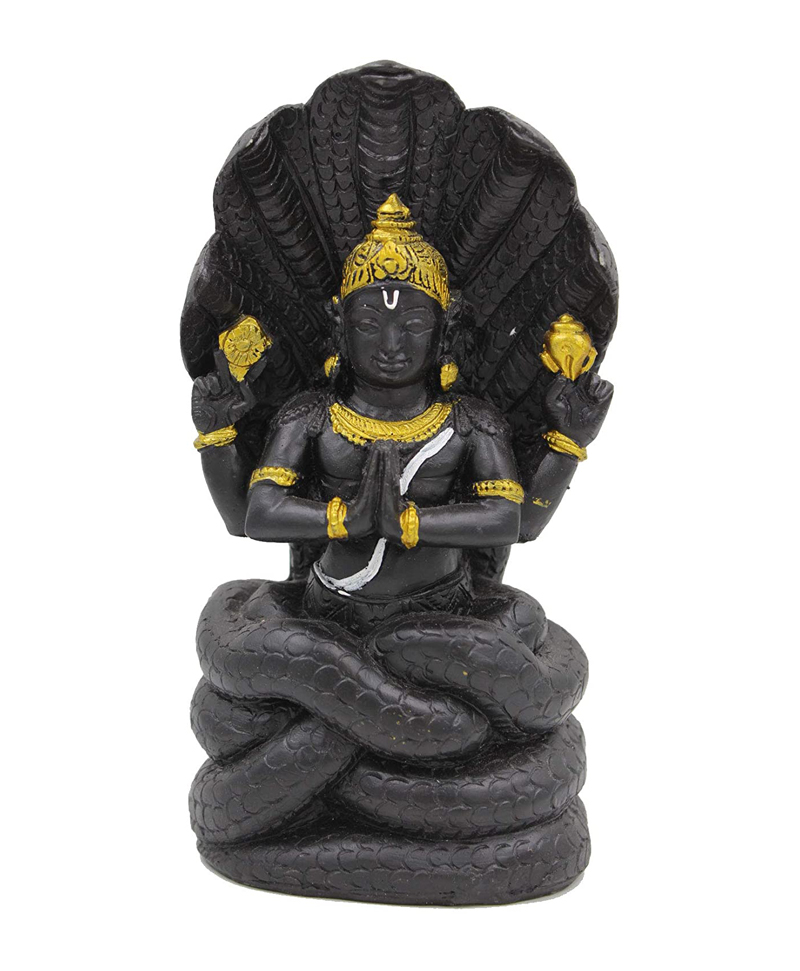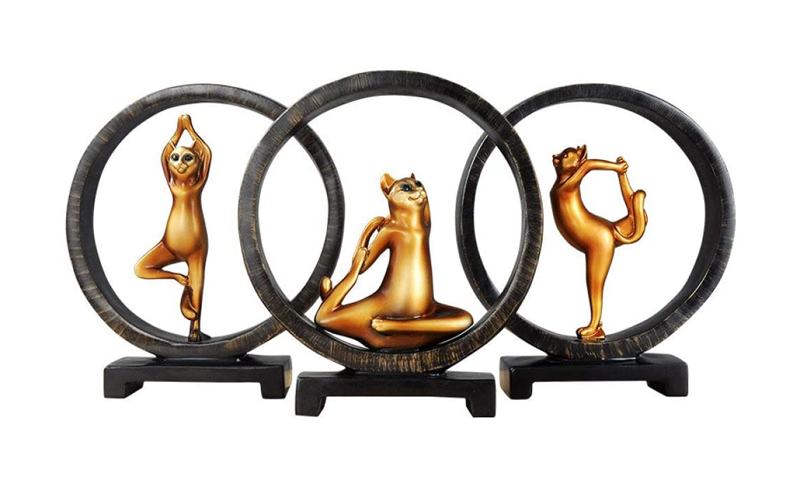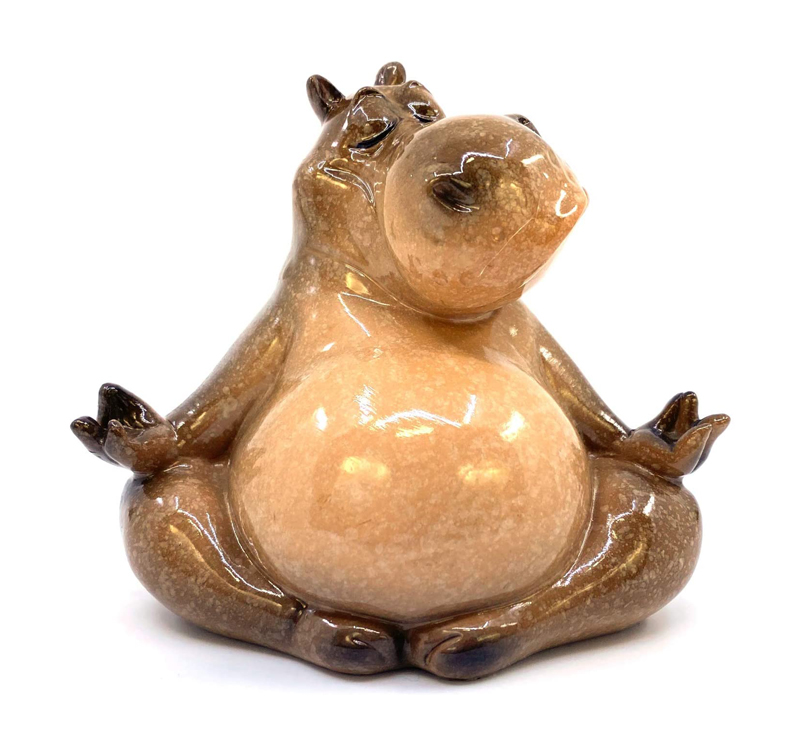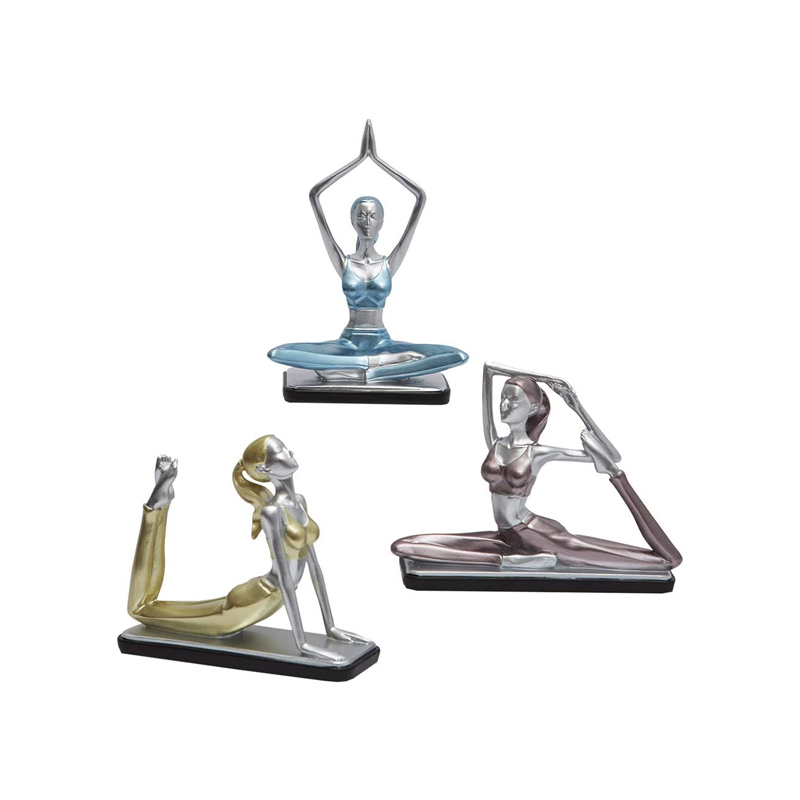Yoga Sutra Patanjali Sits on a Divine Serpent Statue
This Yoga Sutra Patanjali Statue rappresent in the stone Patanjali while meditating seated on a Divine Serpent sculpted in resin with black marble finish. Creates high-quality look without sacrificing the details. A stone sculpture is an object made of stone which has been shaped, usually by carving, or assembled to form a visually interesting three-dimensional shape. Stone is more durable than most alternative materials, making it especially important in architectural sculpture on the outside of buildings. Patanjali was a sage in Ancient India, thought to be the author of a number of Sanskrit works. The greatest of these are the Yoga Sutras, a classical yoga text. There is doubt as to whether the sage Patanjali is the author of all the works attributed to him as there are a number of known historical authors of the same name. A great deal of scholarship has been devoted over the last century to the issue of the historicity or identity of this author or these authors. According to Monier Monier-Williams, the word “Patañjali” is a compound name from “patta” (falling, flying) and “añj” (honor, celebrate, beautiful) or “añjali” (reverence, joining palms of the hand).
The Yoga Sutras of Patanjali is a collection of Sanskrit sutras (aphorisms) on the theory and practice of yoga – 195 sutras (according to Vyasa and Krishnamacharya) and 196 sutras (according to other scholars including BKS Iyengar). The Yoga Sutras was compiled in the early centuries CE, by the sage Patanjali in India who synthesized and organized knowledge about yoga from much older traditions. The Yoga Sutras are best known for its reference to ashtanga, 8 elements of practice culminating in samadhi, concentration of the mind on an object of meditation, namely yama (abstinences), niyama (observances), asana (yoga postures), pranayama (breath control), pratyahara (withdrawal of the senses), dharana (concentration of the mind), dhyana (meditation) and samadhi (absorption). However, its main aim is kaivalya, discernment of purusha, the witness-conscious, as separate from prakriti, the cognitive apparatus, and disentanglement of purusha from prakriti’s muddled defilements.
The Yoga Sutras built on Samkhya-notions of purusha and prakriti, and are often seen as complementary to it. It is closely related to Buddhism, incorporating some of its terminology. Yet, Samkhya, Yoga, Vedanta, as well as Jainism and Buddhism can be seen as representing different manifestations of a broad stream of ascetic traditions in ancient India, in contrast to the Bhakti traditions and Vedic ritualism which were prevalent at the time. The contemporary Yoga tradition holds the Yoga Sutras of Patanjali to be one of the foundational texts of classical Yoga philosophy. However, the appropriation, and misappropriation, of the Yoga Sutras and its influence on later systematizations of yoga has been questioned by David Gordon White, who argues that the text fell into relative obscurity for nearly 700 years from the 12th to 19th century, and made a comeback in late 19th century due to the efforts of Swami Vivekananda, the Theosophical Society and others. It gained prominence as a classic in the 20th century. Yoga Sutra Patanjali Sits on a Divine Serpent Statue measures: 3 inches / 7.5 cm x 5 inches / 12.5 cm x 6 inches / 15 cm.
Yoga Sutra Patanjali Statue on Amazon.
Yoga Sutra Patanjali Statue on eBay.
Religious Statues, Hinduism Statues and Yoga Statues.







You must be logged in to post a comment.